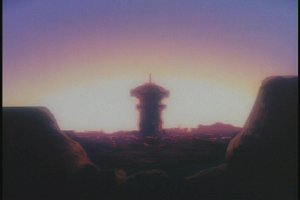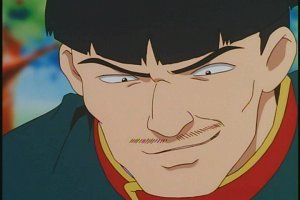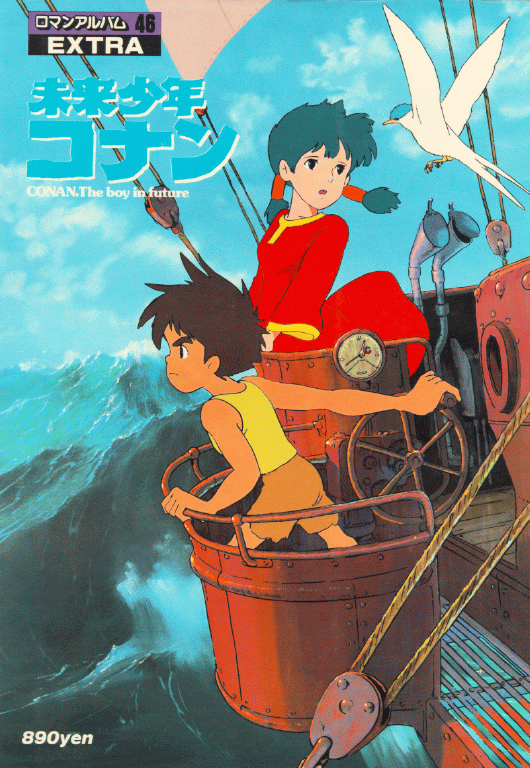So it's been about a year now since I became a devout watcher of anime series and films. I began with Attack on Titan in TV Shows and Hayao Miyazaki's Princess Mononoke for films. In a year, I think I've gotten to know what A) I've come to expect and B) like. I'm the sort of guy who will watch anime that has action, clever plot, comedy and/or romance. However, with today's offering, I had very mixed feelings about it. It has clever plot and action but the themes presented in it made me really freak out.
Series: Here and Now, There and Then
Year: 1999
Director: Akitaro Daichi
Screenplay: Hideyuki Kurata
Studio: Anime International Company
Original Run: October 14th, 1999 - January 20th, 2000
Episodes: 13
Here and Now, There and Then is a series that I can only decribe as being an emotional trainwreck. Despite the fact that Akitaro Daichi's most famous credits are for romantic comedies such as Fruits Basket, he created a genuinely dark and disturbing anime series which analyzes themes of depression, hopelessness, rape, child abuse and war. Although the series begins a light-hearted adventure, don't be fooled: This is, in terms of plotting and themes, one of the most hardcore anime that a fan could hope to watch.
Story: 10/10
 |
| Hellywood, the bleak and miserable setting of this story. |
| Shu and Sara are easily the best-written characters in this anime. |
Characters: 9/10
 |
| King Hamdo, the ultimate representation of evil. |
Animation & Sound: 7/10
This is where the anime actually falters most of the time. The animation is fluid and the cinematography in very theatrical in its own right but the art is a little too cartoony and not as anime-ish. However, I am slightly thankful that it wasn't as detailed as others since more detail would have made this series almost unwatchable. As for sound, this is where major complaints come in. The English Dub isn't horrendous, but there are several really poorly acted roles, such as Jack Taylor as King Hamdo, where the problem is in the character's name: way too much ham and not nearly as creepy as Kouji Ishii's portrayal. I also thought that Dana Halsted as Abelia was just flat and boring but the real surprising awful role was Crispin Freeman as Tabool. Yes, that's right, Crispin Freeman, one of the best voice actors currently alive, was terrible in a role. The man who played iconic anime characters such as Alucard (Hellsing & Hellsing Ultimate), Kyon (The Melancholy of Haruhi Suzumiya) and Itachi Uchiha (Naruto & Naruto Shippuden) was just terrible as Tabool. However, I was pleasantly surprised by Ed Paul as Shu, Dan Green as Nabuca and Kayzie Rogers as Sara. I also feel that the opening and ending themes were not exactly fit for the anime and kind of down-graded it for me but with that said, the animation and sound is all-round good.
 |
| Akitaro Daichi, the man who directed Here and Now, There and Then |
Overall Enjoyment: 8/10
I like this anime. Notice I said "like" and not "enjoyed". I like this anime for its story and characters. The animation and sound aren't bad either. When it comes to judging my overall enjoyment of this anime, enjoy would be the wrong word to use. No human being in the right state of mind would enjoy this but they would be invested in Shu and the other characters so much that they have to keep watching. The anime is a lot like watching a bad car crash: you wish that you could stop watching but you simply can't because the horrific things happening before you are so terrible that it's impossible. With that in mind, I can't give a full 10 or even 9 for my overall enjoyment, as to do that would make me fear for my immortal soul. However, this is an anime that I think needs more attention and I consider it a severely underrated contribution to the genre.
I give it a very reluctant "Goku Seal" because really the "Goku Seal" represents the fact that it's an anime everyone can enjoy or should view. Eventually, I decided to put it on because this is absolutely a series that everyone should view for its plot and characters, both of which are of a rare high quality. This anime was originally licensed by Central Park Media but after their liquidation and bankruptcy in 2009, it was given to ADV Films, who re-released a boxset, which is unfortunately now out of print. I absolutely recommend buying this series, as it is a must-have. For other recommendations, I point you in the direction of Grave of the Fireflies, Isao Takahata's masterful war film showing the suffering of two Japanese children at the end of World War II, and Future Boy Conan, another anime that shows the effects of war and suffering on the planet and holds similar themes to HNTT whilst maintaining a more optimistic perspective. Between these two, you might find something to your liking.
 |
| Future Boy Conan: A more light-hearted take on the post-apocalyptic genre. |
 |
| Grave of the Fireflies: One of the saddest war films ever made. |
So, until next time,
Sayonara!



No comments:
Post a Comment